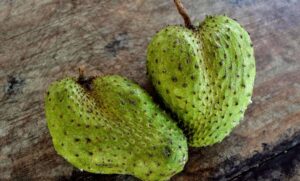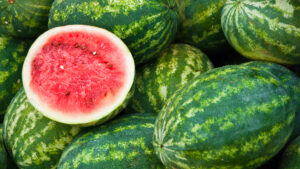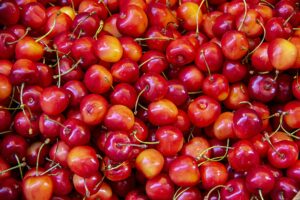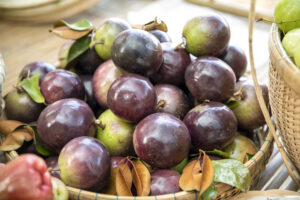How to Grow and Care for Ximenia: A Complete Guide
Ximenia, commonly known as hog plum or sea lemon, is an underappreciated tropical fruit tree that can make a fascinating addition to your garden, especially if you live in the warmer regions of the United States. Whether you’re looking to grow this unique plant in your garden, in containers, or as an ornamental addition to your landscape, this comprehensive guide will walk you through everything you need to know about cultivating Ximenia successfully.
What is Ximenia?
Ximenia americana, also called wild plum or yellow plum, is a semi-parasitic shrub or small tree native to tropical and subtropical regions worldwide, including parts of Florida and the southern United States. Part of the Olacaceae family, this plant produces small, oval fruits with a tart, plum-like flavor that can be used in various culinary applications.
According to the USDA Natural Resources Conservation Service, Ximenia americana is considered a native plant in parts of Florida and has adapted well to the local ecosystem, making it an excellent choice for sustainable and native plant gardening in appropriate regions. Learn more about native plant conservation from the USDA.
Benefits of Growing Ximenia
Before diving into the cultivation methods, let’s explore why you might want to add this unique plant to your garden:
- Culinary Versatility: The fruits can be used in jams, preserves, and beverages
- Drought Tolerance: Once established, Ximenia trees are remarkably drought-resistant
- Ornamental Value: Attractive foliage and fragrant flowers add aesthetic appeal
- Wildlife Support: Fruits attract birds and other wildlife to your garden
- Low Maintenance: Requires minimal care once established
- Market Potential: Growing interest in exotic fruits in the US market
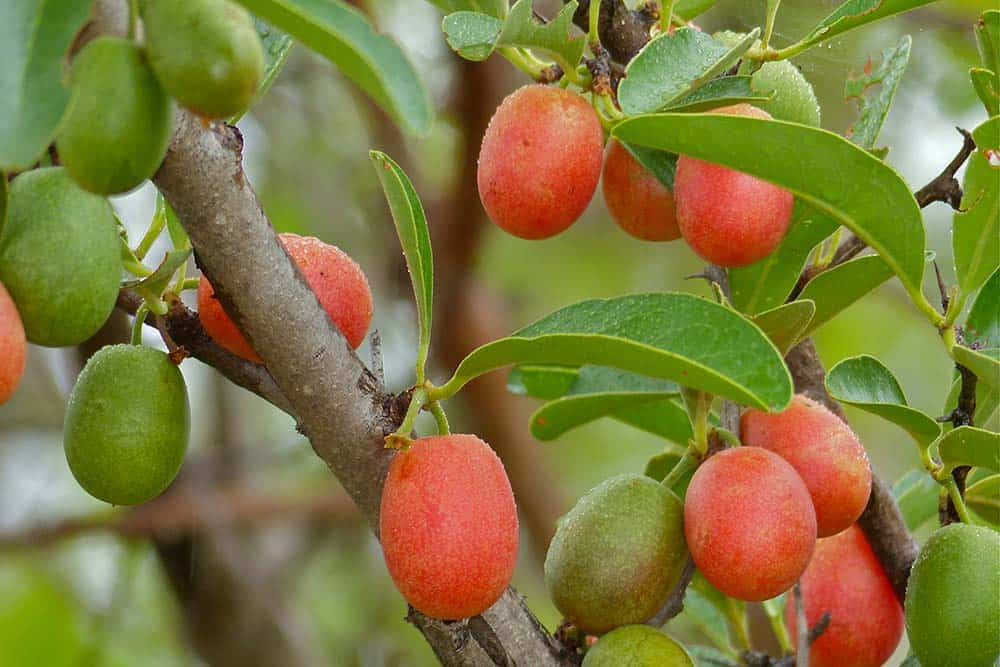
Growing Conditions for Ximenia
To successfully grow Ximenia, you’ll need to understand its preferred growing conditions:
| Requirement | Details |
|---|---|
| USDA Hardiness Zones | 9-11 |
| Sunlight | Full sun to partial shade |
| Soil Type | Well-draining, sandy or loamy soil |
| Soil pH | 5.5-7.5 (slightly acidic to neutral) |
| Water Needs | Moderate; drought-tolerant once established |
| Spacing | 12-15 feet between trees |
| Height at Maturity | 10-20 feet |
| Growth Rate | Moderate |
| Parasitic Nature | Semi-parasitic; benefits from host plants nearby |
How to Grow Ximenia from Seeds
Growing Ximenia from seeds requires patience but can be a rewarding process. Here’s a step-by-step guide:
Seed Collection and Preparation
- Collect ripe fruits: Harvest fully ripened Ximenia fruits when they’ve turned yellow-orange.
- Extract seeds: Remove the pulp and clean the seeds thoroughly.
- Scarification: Lightly sand or nick the hard seed coat to improve germination rates.
- Soaking: Soak the prepared seeds in warm water for 24-48 hours to soften the seed coat further.
Planting Seeds
- Prepare containers: Fill 6-inch pots with a well-draining seed-starting mix.
- Plant seeds: Place seeds about 1 inch deep in the soil.
- Maintain moisture: Keep the soil consistently moist but not waterlogged.
- Provide warmth: Maintain temperatures between 75-85°F (24-29°C) for optimal germination.
- Be patient: Germination can take anywhere from 3 weeks to 3 months.
According to research conducted by the University of Florida’s Agricultural Extension Service, Ximenia seeds have a relatively low germination rate compared to other fruit trees, often between 30-50%. Planting multiple seeds will increase your chances of success. The USDA’s Germplasm Resources Information Network provides valuable information on seed viability and storage for various species, including Ximenia. Check the USDA GRIN database for more information.
Growing Ximenia in Garden Beds
If you’re planting Ximenia directly in your garden, follow these guidelines for optimal results:
Site Selection and Preparation
- Choose a suitable location: Select a spot with well-draining soil and adequate sunlight.
- Test soil: Check soil pH and amend if necessary to achieve the 5.5-7.5 range.
- Consider proximity to other plants: Remember that Ximenia is semi-parasitic and may establish root connections with nearby plants.
- Prepare the soil: Incorporate organic matter like compost to improve soil structure.
Planting Process
- Dig an appropriate hole: Make it twice as wide as the root ball and just as deep.
- Plant carefully: Position your young Ximenia plant at the same depth it was in its container.
- Backfill: Fill the hole with soil, gently firming it around the roots.
- Water thoroughly: Give your newly planted Ximenia a deep watering.
- Apply mulch: Add a 2-3 inch layer of organic mulch around the plant, keeping it away from the trunk.
Container Growing for Ximenia
For those with limited space or in cooler climates, growing Ximenia in containers offers flexibility:
Container Selection
- Choose a large container: Select a pot that’s at least 20 inches in diameter with adequate drainage holes.
- Material considerations: Terra cotta or wooden containers work well as they allow the soil to breathe.
Potting Mix and Planting
- Create a suitable mix: Combine equal parts potting soil, perlite, and compost.
- Add drainage layer: Place a layer of gravel at the bottom of the container.
- Plant appropriately: Position your Ximenia seedling in the container and fill with potting mix.
- Water thoroughly: Ensure the soil is evenly moist after planting.
Container Maintenance
- Regular watering: Container plants dry out faster than garden plants, so monitor soil moisture frequently.
- Fertilization: Apply a balanced, slow-release fertilizer every 2-3 months during the growing season.
- Repotting: Plan to repot your Ximenia every 2-3 years or when it becomes root-bound.
- Winter protection: If you live in zones colder than 9, move containers to a protected area during winter.
The U.S. Department of Agriculture recommends that container-grown tropical fruit trees receive regular fertilization with micronutrients, which are often lacking in potting soil. Learn about plant nutrition from the USDA Agricultural Research Service.
Caring for Established Ximenia Plants
Once your Ximenia is established, follow these care guidelines to ensure its health and productivity:
Watering Requirements
- Initial period: Water deeply once or twice weekly during the first growing season.
- Established plants: Reduce to once every 1-2 weeks, depending on rainfall.
- Drought conditions: Increase watering during extended dry periods.
- Indicators: Wilting leaves signal the need for water.
Fertilization Schedule
| Growth Stage | Fertilizer Type | Application Rate | Frequency |
|---|---|---|---|
| Young plants (1-2 years) | Balanced (10-10-10) | 1/4 cup per plant | Every 2-3 months |
| Established plants | Fruit tree formula (8-3-9) | 1/2 cup per foot of tree height | 3 times yearly |
| Flowering/fruiting | Higher potassium (10-5-15) | As directed on package | During fruit set |
| Winter dormancy | None | N/A | N/A |
Pruning and Training
- Formative pruning: Shape young plants during the first 2-3 years.
- Maintenance pruning: Remove dead, diseased, or crossing branches annually.
- Timing: Prune after fruiting or during dormancy.
- Caution: Avoid heavy pruning as Ximenia typically requires minimal shaping.
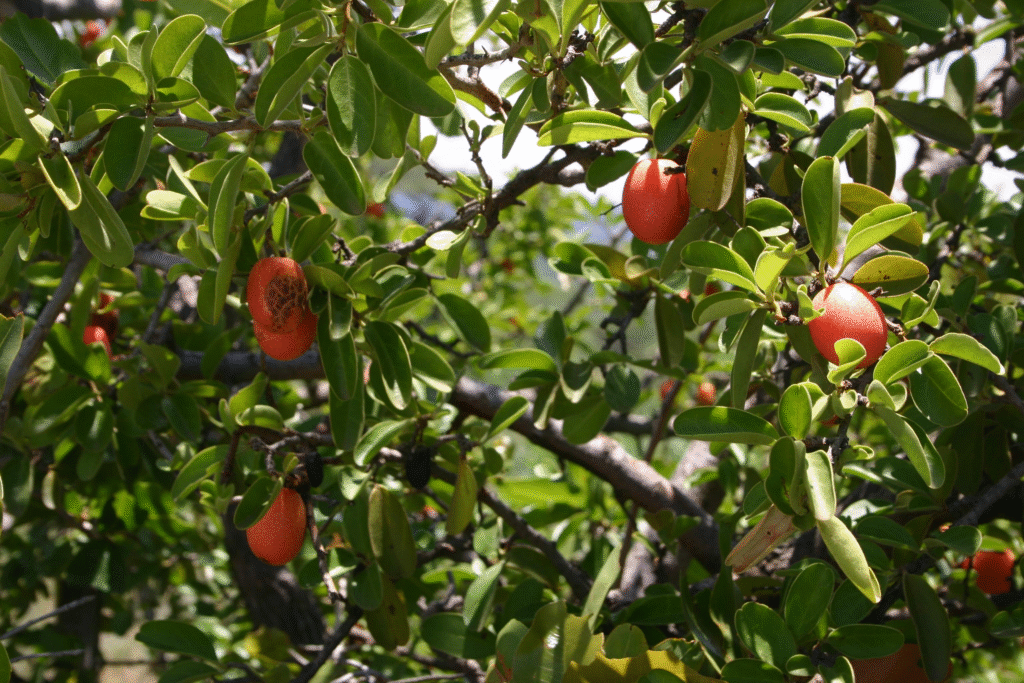
Pest and Disease Management
Ximenia is relatively resistant to pests and diseases, but you should watch for:
- Scale insects: Treat with horticultural oil if infestation occurs.
- Fungal issues: Ensure good air circulation and avoid overhead watering to prevent fungal diseases.
- Root rot: Prevent by providing well-draining soil and avoiding overwatering.
The USDA’s Integrated Pest Management program offers environmentally sensitive approaches to pest management that you can apply to your Ximenia cultivation. Explore IPM strategies at the USDA National IPM Database.
Harvesting and Using Ximenia Fruits
Your patience will eventually be rewarded with harvests of tart, flavorful fruits:
When and How to Harvest
- Ripeness indicators: Fruits are ready when they turn from green to yellow-orange and yield slightly to gentle pressure.
- Harvesting method: Gently twist fruits from the branch or clip with clean pruners.
- Timing: Typically occurs in late summer to early fall, depending on your climate.
- Handling: Wear gloves as the thorns can be sharp, and the sap may cause skin irritation in sensitive individuals.
Culinary Uses
Ximenia fruits have a complex flavor profile that combines tartness with hints of sweetness. Here are popular ways to use them:
- Fresh consumption: Ripe fruits can be eaten fresh, though they are quite tart
- Preserves and jams: The high pectin content makes them excellent for preserves
- Sauces: Create unique savory sauces for meat dishes
- Beverages: Add to smoothies or make into juice (usually sweetened)
- Desserts: Incorporate into pies, tarts, and other baked goods
Market Potential in the US
As American consumers increasingly seek unique and exotic fruits, Ximenia presents an interesting opportunity for small-scale growers and specialty farmers:
- Farmers markets: Sell fresh fruits directly to consumers
- Value-added products: Develop preserves, juices, or dried products
- Restaurant supply: Partner with farm-to-table restaurants seeking unique ingredients
- Specialty stores: Supply to gourmet and health food stores
According to the USDA Agricultural Marketing Service, specialty and exotic fruit markets continue to expand in the United States, with particular growth in regions with diverse culinary traditions. Learn about specialty crop marketing from the USDA AMS.
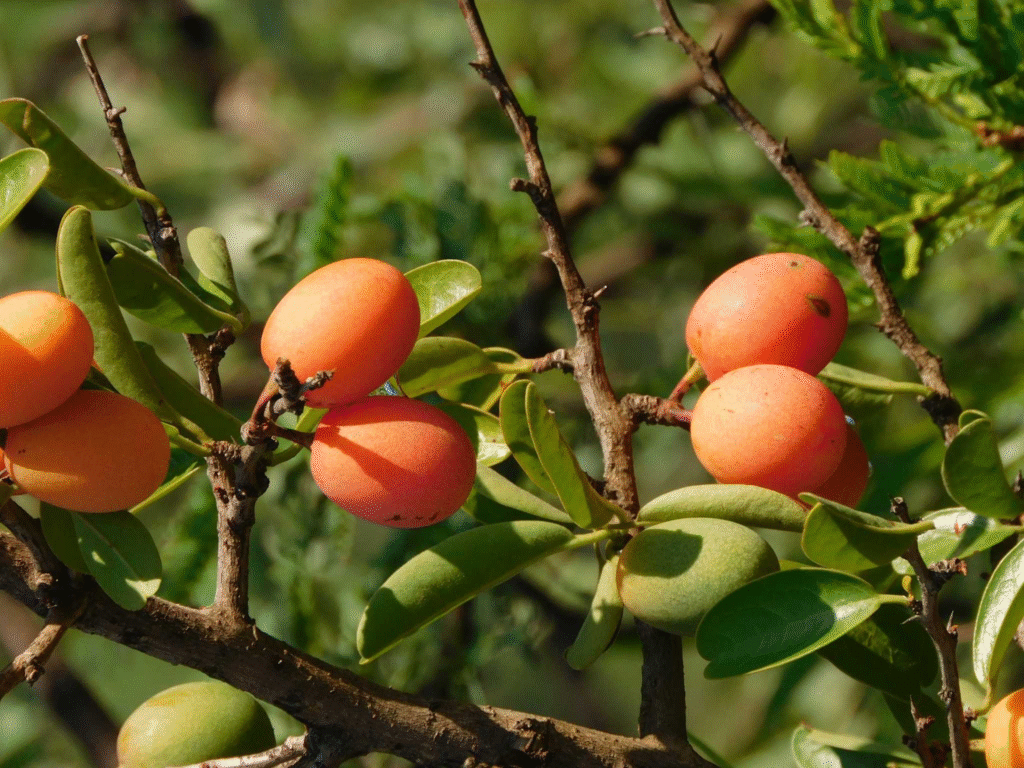
Troubleshooting Common Issues
Even with proper care, you might encounter challenges when growing Ximenia:
Poor Growth or Yellowing Leaves
- Possible causes: Nutrient deficiency, improper pH, or inadequate light
- Solutions:
- Test soil and adjust pH if necessary
- Apply appropriate fertilizer
- Consider relocating to a sunnier spot if possible
Lack of Fruiting
- Possible causes: Immaturity, insufficient pollinators, or climate stress
- Solutions:
- Be patient; Ximenia may take 3-5 years to begin fruiting
- Plant pollinator-attracting flowers nearby
- Ensure optimal growing conditions
Winter Damage in Marginal Zones
- Possible causes: Frost exposure or cold winds
- Solutions:
- Apply thick mulch around the base
- Consider frost protection covers during cold snaps
- Plant in protected microclimates
Conclusion
Growing Ximenia can be a rewarding addition to your gardening repertoire, offering unique fruits and an attractive landscape plant. While it requires some specific conditions and patience, the results are well worth the effort, especially if you’re interested in expanding your culinary horizons or exploring potential specialty crop markets.
Whether you choose to grow it in your garden or in containers, following the guidelines in this article will help ensure your success with this fascinating tropical fruit tree. As interest in unusual fruits continues to grow in the US market, Ximenia represents an exciting opportunity for adventurous gardeners and small-scale growers alike.
Remember that Ximenia’s semi-parasitic nature means it will perform best when planted near potential host plants, though it can survive on its own once established. With proper care and attention to its specific needs, you’ll be enjoying the unique fruits of your labor within a few years.
For more information on growing native and specialty fruit trees in your region, consult your local USDA Cooperative Extension office, which can provide region-specific advice tailored to your growing conditions.

